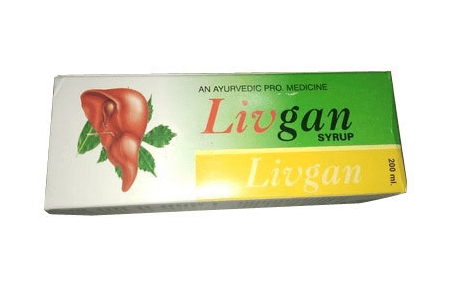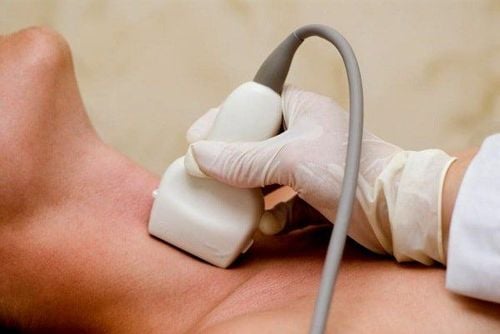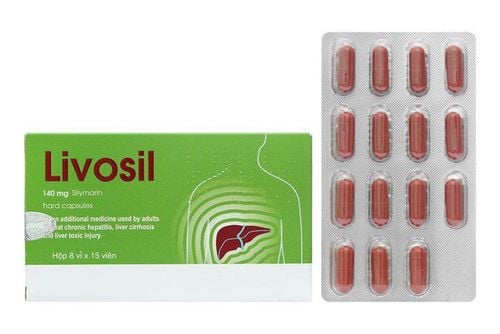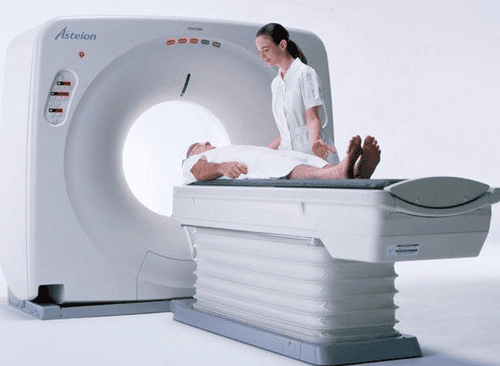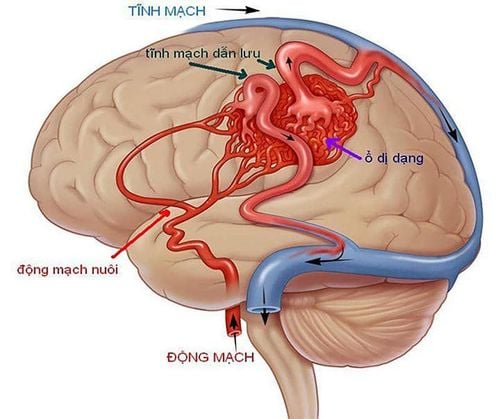This is an automatically translated article.
Posted by Resident Doctor, Master Tran Duc Tuan - Department of Diagnostic Imaging - Vinmec Central Park International General HospitalThere are many treatment methods for liver cancer, including radical treatment such as liver tumor resection, liver transplantation, radiofrequency treatment or absolute alcohol injection for small tumors, however, the proportion of patients treated Treatment according to these methods is not much, about < 30% due to late detection of disease, poor liver function... Chemical liver embolization (TACE) is considered an effective treatment in cases of liver cancer. There is no indication for curative treatment.
Chemical hepatic embolization was first reported in 1974 by Doyon et al. Currently, in addition to conventional embolization materials with lipidol suspensions combined with chemicals (doxorubicin, farmorubicin, cisplastin...), there are chemically attached microspheres (DC bead, Hepashere...) or with radioactive particles to help kill tumor cells better.
1. Indications and contraindications
1.1 Indications Primary liver cancer, or secondary angiogenesis, with no indication for surgery.1.2 Contraindications Liver tumor is too large: The volume of liver tumor occupies more than 1/2 of the liver volume. Portal vein thrombosis: Currently a relative contraindication, depending on the patient, if the patient is young, the liver function is still good, it is possible to combine the superselective node and the arterial chemotherapy (cystplastin) for these patients. this case. Coagulation disorders : Need to be corrected before intervention Severe cirrhosis: Child pugh C. Pregnant women.

2. Preparing to perform digital imaging techniques to erase the background and embolize the arteries to treat liver cancer (HCC)
2.1 Executor Specialist Auxiliary physician Electro-radiologist Nurse Doctor, anesthesiologist (if patient cannot cooperate) 2.1 Equipment Digital background eraser angiogram (DSA) Pump specialized electricity Film, film printer, image storage system Lead vest, apron, X-ray shielding 2.3 Local anesthetics Pre-anesthesia and general anesthesia (if anesthesia is indicated) Medicines anticoagulant Neutralizing anticoagulants Water soluble iodinated contrast agents Skin and mucosal antiseptic solutions 2.4 Common consumables Syringe 1; 3; 5; ten; and 20 ml Syringe for electric pumps Distilled or physiological saline Gloves, gown, cap, surgical mask Aseptic intervention kit: knife, scissors, tongs, 4 metal bowls, bean tray , instrument trays Cotton, gauze, surgical adhesive bandages Medicine box and first aid kit for stroke contrast agents 2.5 Special consumables Arterial needles Intravascular set of size 5-6F Standard leads 0.035 inch 4-5F angiogram Catheter 2-3F Microcatheter 0.014-0.018 inch Y-connector set Three-pronged vascular closure kit 2.6 Embolization material Biofoam (gelfoam) Anti-cancer chemical Lipiodol super liquid 2.7 Patient The patient is explained carefully about the procedure to coordinate with the doctor. Need to fast, drink before 6 hours. Can drink no more than 50 ml of water In the intervention room: The patient lies on his back, fitted with a monitor to monitor breathing, pulse, blood pressure, electrocardiogram, SpO2. Disinfect the skin, then cover with a sterile towel with holes.
3. Technical process of digital imaging to erase the background and embolize the arteries to treat liver cancer (HCC)
3.1 Anesthesia With the patient lying supine on the table, an intravenous line is placed (usually 0.9 % isotonic saline serum is used). Usually local anesthesia, pre-anesthesia can be injected in exceptional cases such as young children (under 5 years old) who are not yet conscious of cooperation or too excited to be afraid to need general anesthesia during the procedure. 3.2 Location of angiography Usually (>90%) femoral artery puncture In special cases, brachial artery puncture 3.3 Angiography and selective threading of injured artery Abdominal aorta should be performed with pigtail catheter or straight catheter with lateral hole Upper mesenteric angiogram to evaluate portal venous system Using catheter to select visceral artery or mesenteric, subphrenic, renal... : Cobra, sidewinder... Identify damaged blood vessels, use microcatheter to thread superselectively into the pedicle of blood supply to the tumor. Superselective embolization of the tumor by superfluid lipiodol suspension + anti-chemotherapy cancer until the entire tumor has deposited chemicals. Then plug the tumor peduncle with biofoam (gelfoam) Take a scan to check the occlusion of the vascular peduncles, continue selective embolization if still available Remove the catheter and insert the lumen End the procedure, bandage 6 hour femoral artery compression4. Follow-up during and after the intervention
After the intervention, patients should lie on the hospital bed, immobilize the leg on the side of the puncture and monitor for bleeding complications for at least 6 hours. Monitor pulse, temperature, blood pressure, respiratory indicators. Continue to maintain antibiotics for 3-5 days depending on the development of post-nodal syndrome. Use pain relievers if needed.
5. Complications and treatment
Renal failure: Especially in cases of renal vascular intervention. During the intervention, care should be taken not to cause the blood vessels to heal. After the intervention, many fluids should be given. Monitor the status of the abdomen: In some cases, it may cause occlusion of the gastrointestinal blood vessels, causing signs of intestinal ischemia. Related to common complications during intervention: Arterial dissection, perforation, bleeding....monitoring, or treatment with endovascular intervention or surgery according to specialist opinion. Vasoconstriction: Monitor wait 10-15 minutes or can use selective vasodilator. Intravascular catheter or wire breakage: Using specialized instruments obtained through endovascular or surgical intervention. Due to contrast agents Post-embolization syndrome: Due to embolism and anti-cancer chemicals released into the blood. Internal medicine consultation. The danger of liver cancer has shown the importance of screening and early detection of the disease. Therefore, Vinmec International General Hospital has provided customers with a package of screening and early detection of liver cancer to screen for liver cancer for people at high risk of diseases such as: alcoholics, cirrhosis, family history of liver cancer, cirrhosis, hepatitis B virus infection, chronic hepatitis C,...Service selection Package for screening and early detection of liver cancer, patients will be examined, consulted and performed tests, diagnostic imaging to evaluate liver function, liver diseases and liver cancer screening. With a system of modern machinery and a team of highly qualified and experienced doctors, Vinmec is committed to the best protection for the health of patients.
Please dial HOTLINE for more information or register for an appointment HERE. Download MyVinmec app to make appointments faster and to manage your bookings easily.
SEE MORESymptoms of liver cancer in the early stages are very poor The danger of liver cancer Liver cancer recurs after surgery





